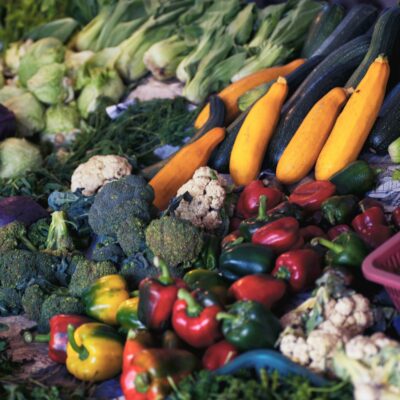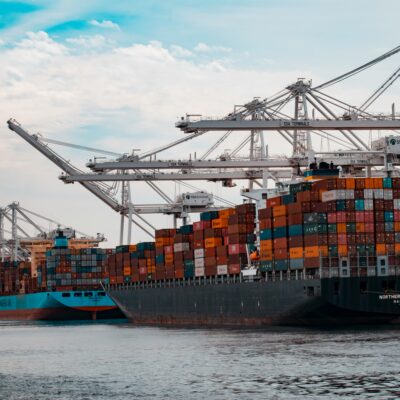
Frustrated with dealing with risk assessment as a manual task?
Today, although we have good food safety standards, food safety systems, certifications, and risk assessment strategies – recalls and border rejections are increasing – the number of recalls and border rejections reported in 2019 have doubled compared to 2014.

Risk assessment is one of the most important tools to prevent recalls. However, today’s risk assessment is too often approached as a checklist compliance task. Not using appropriate technology, data, and strategies to their fullest extent will lead to poor risk management outcomes. It causes resources to be misdirected toward redundant activities or events that are unlikely to occur. This risk assessment approach is based on historical incidents and cannot really help experts to identify emerging and increasing risks.
The COVID-19 situation has created a bottleneck within the food industry. In a post-COVID-19 world, the industry has to deal with a disrupted supply chain. Companies need to continually change suppliers while dealing with shorter supply chains. Meanwhile, budget and travel restrictions prevent experts from conducting audits. This situation is moving us to explore the possibilities for remote risk assessment.
Risk assessment challenges
The assessment and management of risk are challenging as it needs to take into account all the stages of our supply chain, namely a) the production stage, b) the stage of incoming materials, c) the processing and manufacturing stage, and d) the storage, distribution and food service stage.

At the production level, laboratory testing data of harvested agricultural products and farming data can be very helpful for risk assessment, in order to identify unwanted chemicals and toxins at an early stage.
At the level of the incoming materials, data about border rejections, laboratory testing results, and supplier information including certificates, and audit results, are generated. Data from this level is very helpful to identify risks for the ingredients and materials before getting them into the plant. At the processing level, we have a lot of data including laboratory test results, environmental data, and internal recall data. At the storage, distribution, and service levels we have data about border rejections, controls on the market, and recalls. We should also add to the picture data that is highly relevant for all the stages such as commodity pricing data, country risk indicators, and foodborne disease outbreaks.
As you can see, from all the stages of the supply chain, a wealth of data and knowledge is generated about risks in foods due to better monitoring systems, testing technologies, and advances in research. But where is this knowledge when we need it? Do we have mature technologies that can deliver all the available data, and that can perform risk estimations for any ingredient?
An important challenge is how to integrate all this data
The data that we described is highly scattered, heterogeneous, multilingual, and disconnected. To integrate all this data a significant amount of time and effort is needed. This challenge can be addressed with efficient data processing workflows that include steps for collecting, processing, translating, and semantic annotation. The main goal of such workflows is to take advantage of the computers’ power in dealing with big data and combine it with the knowledge and experience of food safety experts. Automatically processed and enriched data are reviewed by the experts to enable high-quality and harmonized data.

In addition to data, today we have systems and tools that can help us in risk assessment such as:
- Online systems that can be used to access accurate and timely data about reported incidents in the global supply chain
- Web-based systems designed to analyze data concerning microbial and chemical hazards in food and return an estimate of the resulting health burden on a population level
- Online tools that can predict the behavior of a specific microorganism under a variety of conditions
- Compliance management software systems that conduct Risk Assessments based on international best practices
- Systems that collect and process environmental data in plants. Data can be collected using sensors, environmental swabs, product testing, sanitation conformance, compliance measures, and many other data elements.
Let’s recap: Today we have the available data and the technologies that can help us to move away from risk as a checklist compliance task. To get the maximum value from data and technologies we need to combine them. Let’s see how we can do that.
Setting up a live risk assessment
We have analyzed in a previous article how we can take advantage of the available tools and platforms to perform a robust risk assessment.
Here we would like to focus on how the available data, new innovative digital solutions, and the systems that a company already has, can be combined to enable a live and automated risk assessment.

To set up a live risk assessment, we need to feed our risk assessment module with data from different stages of the supply chain such as global data about recalls and lab tests, company internal data about lab tests, non-conformities, and environmental conditions. This is live data that we can continuously collect from public sources and company data sources. All this data needs to be harmonized and linked so it can be used in the risk assessment steps. The interconnection of this data is achieved using the data workflows that we analyzed earlier in this article.
The harmonized live data can be then used to monitor hazards in ingredients and to identify ingredients at high risk. Using the information on the ingredients and product management system that the company has we can identify the products that will be affected, and this will help the experts to define the internal mitigation actions. By using the information of the company’s suppliers’ management system, we can notify the suppliers at risk for the required actions e.g. to do extra lab tests and to add a processing control step.
Today we have both the data and technologies to establish a robust risk assessment strategy that is dynamic and automated. Let’s summarize here the main points of such a strategy:
- Take advantage of all the available data from different stages of the supply chain
- Combine different tools and software systems that can estimate risk at different stages of the supply chain
- Do not rely on static risk estimations but continuously update the risk
- Automate the approach by connecting risk systems with your internal systems
By implementing these points we can move away from dealing with risk assessment as a manual task based on scattered spreadsheets, to a more dynamic and automated approach that is able to identify increasing and emerging risks.
If you’d like to discover how FOODAKAI can help your Food Safety & Quality team prevent product recalls by monitoring & predicting risks, schedule a call with us!







